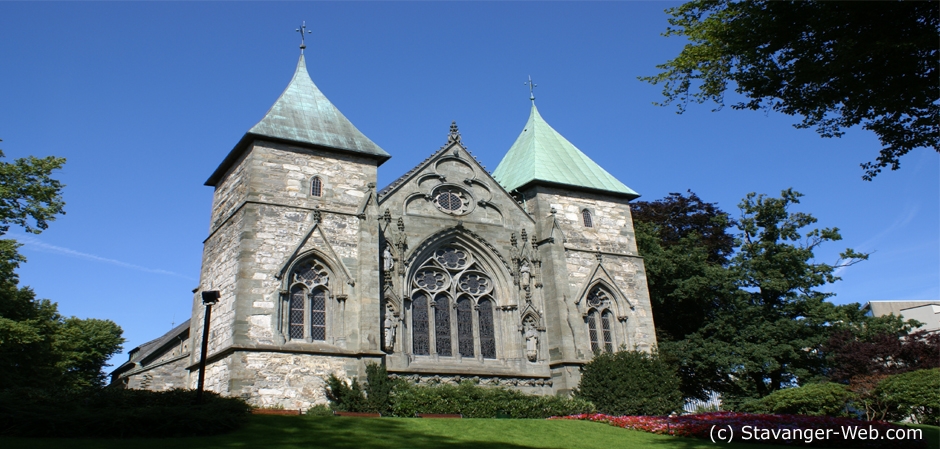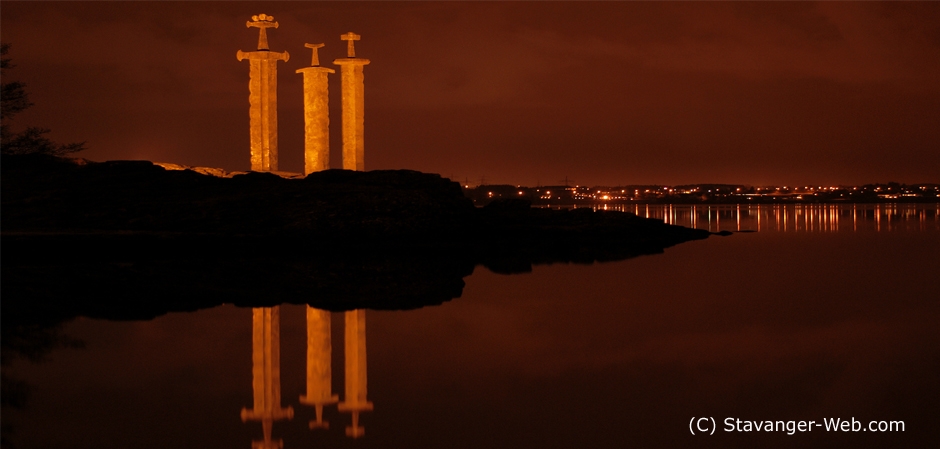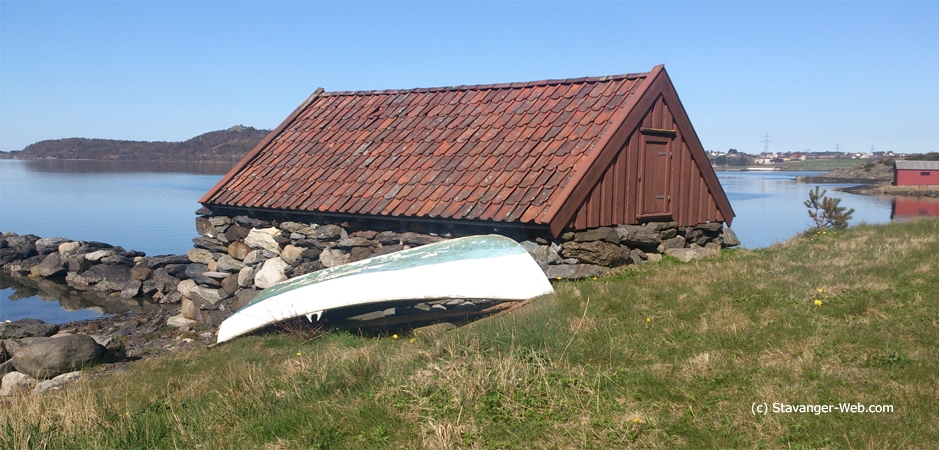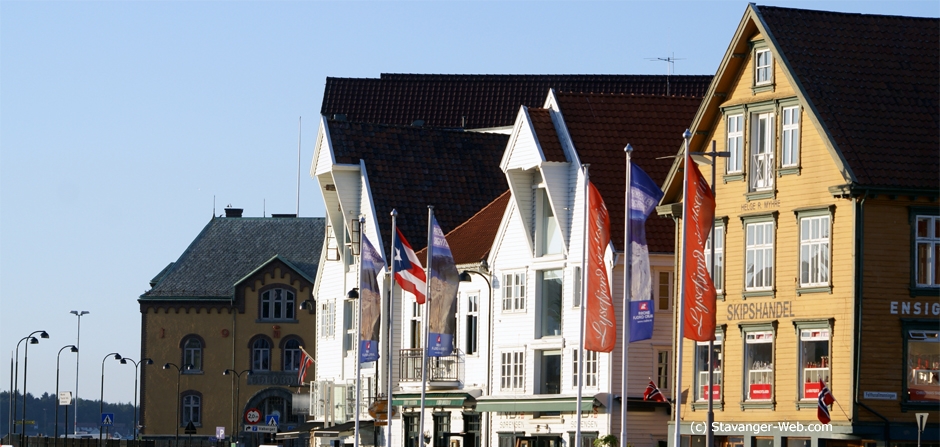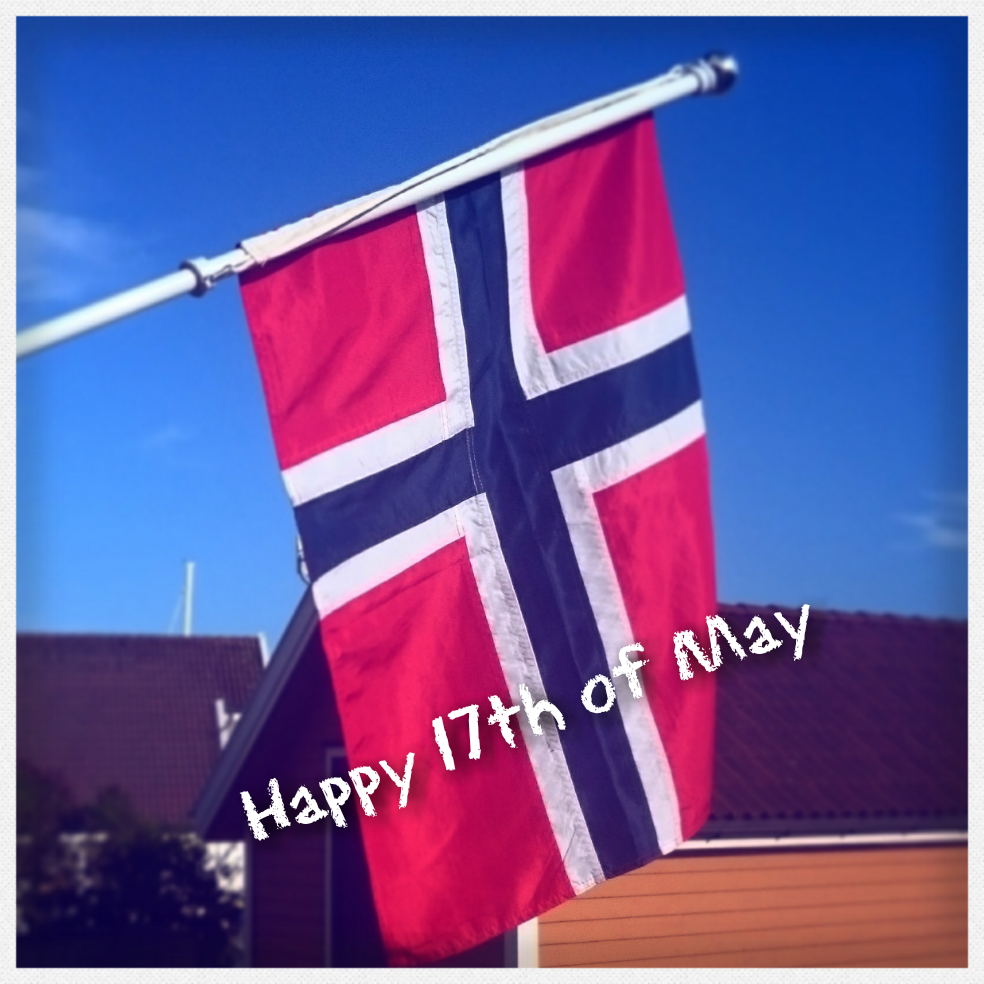The Norwegian Flag
The Norwegian flag dates back to 1821, seven years after independence was achieved from Denmark. From the seventeenth century and up until 1814, Norway and Denmark had a common flag, the Danish. In 1814, however, Norway joined a union with Sweden, and it was decided that Norway should use the Swedish flag, with a white on red cross in the upper left hand corner. But the Norwegians, who had written their own constitution, also wanted a flag to call their own. The flag was designed by Fredrik Meltzer from Bergen.
Norwegian flags as shown on a stamp from May 8, 1965 - 20 years after the liberation from Germany who occupied Norway during the Second World War.
The Norwegian flag has distinctive proportions:
Width: 6-1-2-1-12
Height: 6-1-2-1-6
The 17th of May in Stavanger
The 17th of May is Norway's Constitution Day. It is celebrated with great enthusiasm by young and old. The celebrations marks the day in 1814 when Norway got its independence from Denmark. It is a day of flags, parades. speeches and bands playing the national anthem, "Ja, vi elsker dette landet"- which you can hear in the background. Families gather. Norwegians everywhere wear their highly embroidered national costumes, called "bunader". Many countries celebrate their Constitution or Independence, but opposed to these, the Norwegian celebration has no reference to military power.
The Seventeenth of May usually starts with a flag-hoisting ceremony at a nearby school, church or other governmental building. Then, pupils join in the Children's Parade, while adults watch and cheer from the sidewalks. All the schoolchildren in the whole country march with the Norwegian flag in their hands and colorful banners, which represent their school or their class, in front.
After the Children's Parade, each local community organizes its own celebration consisting of speeches, games and contests for the children, bands playing and hot dogs and ice cream. It is common for the celebrations to take place in the school-yards. Almost every school has its own brass-band which contributes to the celebrations. After the activities in the school-yards, the festivities continue in the center of town, where people from all over the city meet. Here there is a new parade with different organizations marching. All kinds of organizations are represented; the girls scouts, soccer teams, folk dance groups, religious organizations, bands etc.
At night, it is common to join friends and neighbors for a party at someone's house, at a nearby playground, or in the streets.
|
|
BackgroundIn 1319 Norway was linked with Sweden in a union after over 400 years as a self-governing and independent state. In 1380, Norway and Denmark were united under the same king, a union which eventually led to Norway's being integrated in a Danish-Norwegian single unified state with Denmark. It was not until January 14, 1814, the date of the Treaty of Kiel, that the Danish-Norwegian dual monarchy was dissolved and King Fredrik IV of Denmark was forced to cede Norway to the King of Sweden.On April 10, 1814 the Danish regent in Norway called together the popularly elected National Assembly at Eidsvold Iron Works outside Christiania (Oslo) for the purpose of giving the country a constitution. 33 of the delegates in the National Assembly were chosen from the army and the navy, 25 from the cities and 54 from the countryside. Because of the long distance, the northern part of Norway had no delegates. The Constitution was signed the 17th of May, 1814. The same day Christian Fredrik was elected king of Norway. He reigned only a few months, and then the throne was handed over to the Swedish king, Karl Johan, the 10th of October 1814. For the next 100 years, until 1905 Norway was in union together with Sweden. As early as the 1820s people started to celebrate the 17th of May, and since then this day has been established as Norway's National Day, Norway's Liberation Day, even though the celebrations have in the course of time changed their character and form. The history of the 17th of May celebrations in Norway reflects in many ways the main features of the country's history from 1814 until today. |
